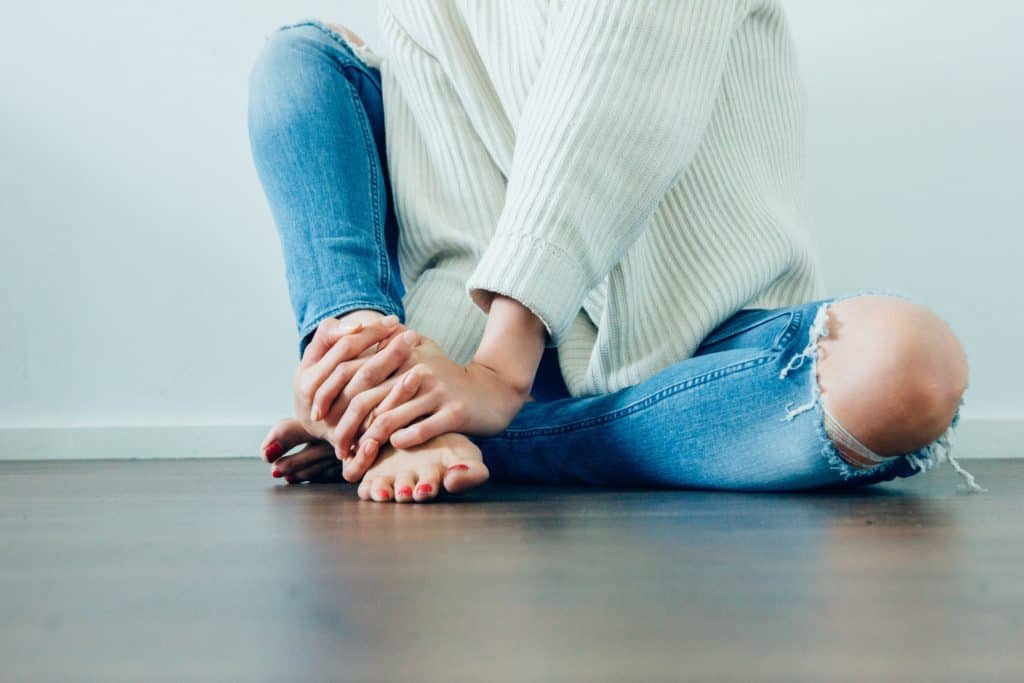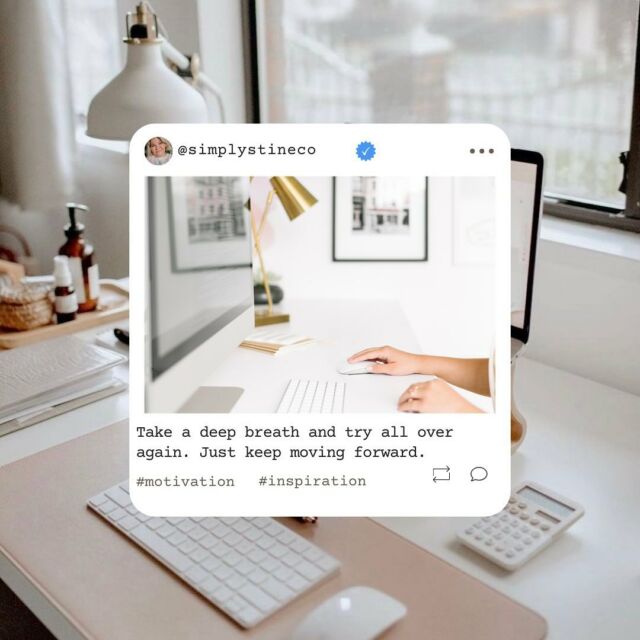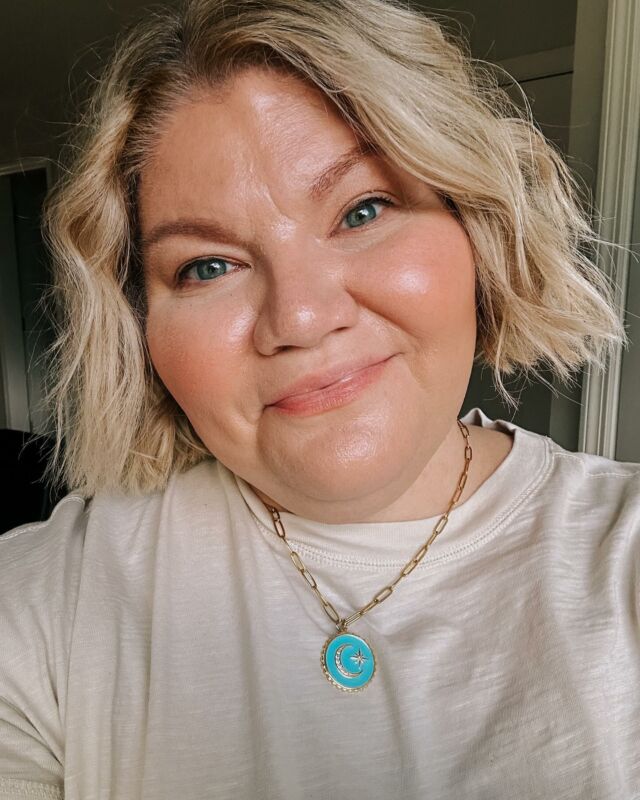I wanted to do a post dedicated to Endometriosis because March is Endometriosis Awareness Month. If you’re a new follower here, you’ll want to know that occasionally I’ll share personal stories about my struggles with Infertility, PCOS, and Endometriosis. I am always an open book, especially about this topic!
Not only do I want to talk about my personal history with Endometriosis, but I want to share information so that you can learn more about this major issue many women are facing. If you’re not sure what Endometriosis is, this post might be worth reading. I think you’ll learn quite a bit!

Endometriosis Awareness Month
There is so much confusion surrounding Endometriosis. It can take some women between 6 to ten years to receive an actual medical diagnosis. Some women are told that their concerns and issues are just in their head. That they’re just having a bad period. A lot of women are asking their OBGYN for help and they’re being ignored. They’re not sent to specialists who specifically works with Endometriosis, they’re just sent home with pain medicine, if anything at all.
This is why we have Endometriosis Awareness Month. We need to continue the education on this issue so that women can seek out help and advice when needed. That way it doesn’t take years to get a diagnosis and treatment plan in place.
How Do I Know If I Have Endometriosis?
For me, I always had absolute horrible cramps. I can’t even describe the pain that I had when it came time for my period every month. As I got older, I also had excruciating pain in my back. I had issues with chronic fatigue. It was hell. I was given pain medication and put on birth control, but nothing really worked. The birth control made me crazy, literally.
I had numerous laparoscopic surgeries. When it came time for me to actually pursue having a family, this is when it all seemed to just get worse. I had such bad scar tissue damage, along with fibroids and cysts, that I realized how serious Endometriosis was at that point and how it affected my life.
The Mayo Clinic defines Endometriosis as:
“Tissue that normally lines the inside of your uterus — the endometrium — grows outside your uterus. Endometriosis most commonly involves your ovaries, fallopian tubes and the tissue lining your pelvis. Rarely, endometrial tissue may spread beyond pelvic organs.
With endometriosis, the endometrial-like tissue acts as endometrial tissue would — it thickens, breaks down and bleeds with each menstrual cycle. But because this tissue has no way to exit your body, it becomes trapped. When endometriosis involves the ovaries, cysts called endometriomas may form. Surrounding tissue can become irritated, eventually developing scar tissue and adhesions — abnormal bands of fibrous tissue that can cause pelvic tissues and organs to stick to each other.
Endometriosis can cause pain — sometimes severe — especially during menstrual periods. Fertility problems also may develop.”
The symptoms of Endometriosis:
- Pain including pelvic and lower abdominal pain
- Pain with intercourse
- Bowel and bladder issues
- Fertility issues
- Extreme cramping
- Bloating
- Heavy menstrual periods
- Mental Health (Depression, etc)
- Chronic Fatigue
I’ve been open about my struggles with Endometriosis and have shared previous posts on Simply Stine about my experience with it. I encourage you to read those blog posts to maybe get a better understanding of what I went through and my history with it. Along with Endometriosis, a lot of women also have issues with PCOS, Cysts, Fibroids, etc. I do! There is so much that goes along with having an understanding of Endometriosis and what women are going through.
If you feel that you are experiencing some of these issues, please consult a medical professional and ask questions. I can’t urge this enough. Don’t just live with the pain and write it off, it can can just get worse the longer it goes untreated.
Treatment of Endometriosis
In order to get a diagnosis, you must talk to a doctor. For most women, it can sometimes take numerous doctors to actually give a diagnosis. This goes back to what I said before about doctors brushing off what women were saying about their symptoms, etc. For me, I had laparoscopic surgery, where my doctor confirmed Endometriosis. Not all women get that confirmation because it can take forever to have a doctor schedule the procedure.
Treatments for Endometriosis can be pain medication, laparoscopic surgery, birth control, diet changes, and even a hysterectomy. There are also a lot of holistic treatments that many people seek out as well. My biggest tip is to do research when choosing your doctor and if you aren’t happy with what you’re told or it doesn’t seem right, keep searching until you’re comfortable with what you’re being told.
There isn’t a cure for Endometriosis, but there are ways to help manage the pain and symptoms. I say manage lightly, as I know what it’s like to be on pain medications, hormone treatments and still be in pain. My biggest advice is to seek out a doctor that you trust and that you have good communications with. Be honest when you’re miserable and suffering.

Endometriosis Awareness Month and Infertility
A recent article that I read stated that about 40% of women who are dealing with Infertility are among those women who are dealing with Endometriosis. That is such a high percentage. Early diagnosis can be so crucial in you starting a family. The sooner you seek medical treatment for a diagnosis, the better your chances of starting a family might be.
Because of the damage that Endometriosis did to my body, I wasn’t able to become a mother. Along with other issues that I was experiencing, it just wasn’t a possibility. My struggles and my story are what make me so passionate about speaking up about this disease.
1 in 10, roughly 176 women worldwide are dealing with Endometriosis. It’s not just an issue that is concerning a handful of people. This is why we have Endometriosis Awareness Month. We need to keep speaking about this so women know that if they’re in pain, to seek treatment and advice. I also speak for those women who are still suffering and in pain.
Endometriosis changed my life. If you are experiencing any of the symptoms that I mentioned above, please speak to a specialist. Don’t wait for it to get better because it possibly won’t, sadly. Let’s keep up the conversation around this topic. Let’s not be silent. Experiencing horrible cramping, fatigue, constant pain and abnormal bleeding doesn’t have to be your life.
Are you 1 in 10? I’d love for your to share your experience with Endometriosis and anything that you’ve found helpful that could be passed along. Let’s stick together and make changes happen!

 I saw the solar eclipse.
I saw the solar eclipse.











Leave a Reply